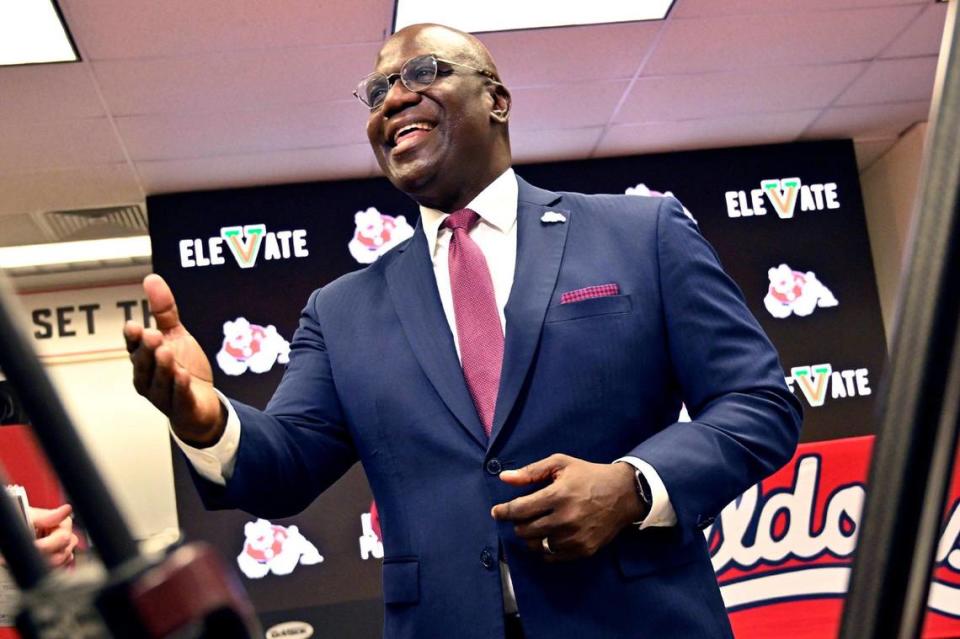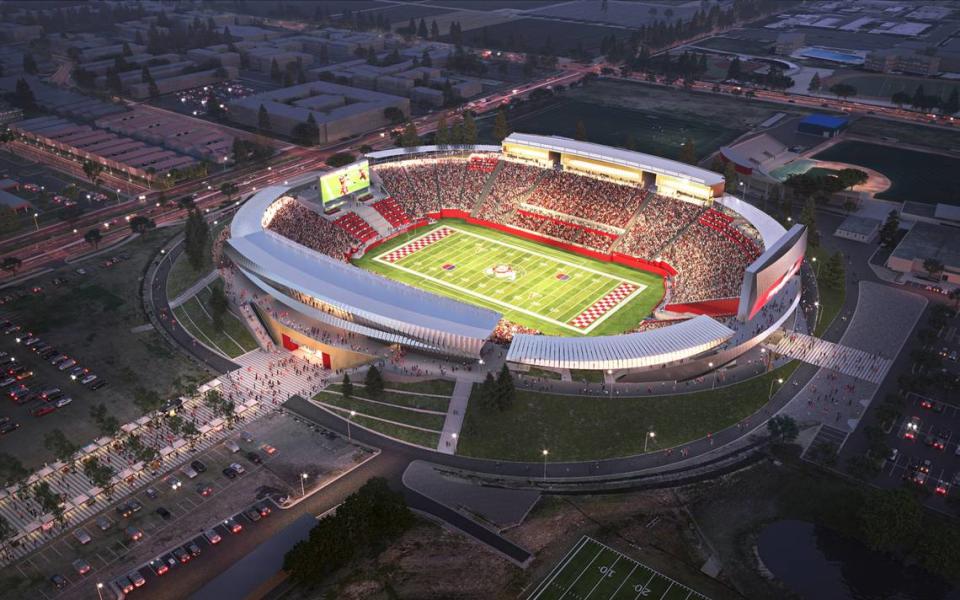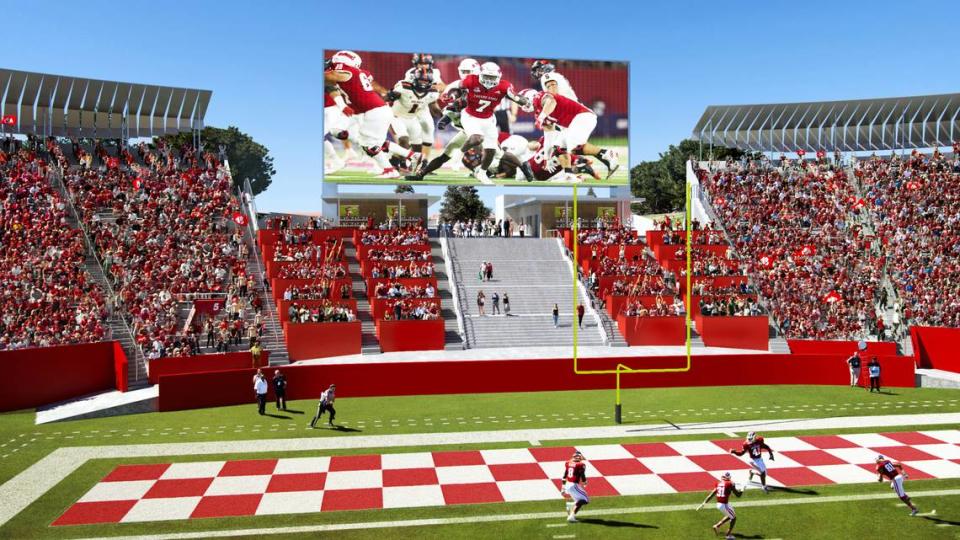Fresno State has a plan to upgrade sports facilities. Here’s why this time it might work | Opinion
It’s always better to have a plan — even one that might be a little beyond your reach — than no plan at all.
Fresno State, for the first time under its current leadership, formulated a comprehensive plan to upgrade its aging athletic facilities. One that encompasses not only the decrepit football stadium but every Bulldogs venue and training center on campus.
The university unveiled its Elevate “aspirational master plan” earlier this week in a 3-minute video narrated by former quarterback Jake Haener. A 42-page document found at gobulldogs.com provides a deeper dive, including architectural renderings of what Valley Children’s Stadium, Bob Bennett Stadium, Margie Wright Diamond and the others could look like after $250 million worth of upgrades.
For Fresno State to launch such a massive, multi-phased fundraising campaign at a time when ambitious President Saúl Jiménez-Sandoval and Big 12 officials are discussing potential expansion is either exquisite timing or the happiest of coincidences.
Simply because there’s no better way for the Bulldogs to prove their Power 5 conference worthiness than to make the facilities investments required to compete at that level. Or at least display an institutional willingness to do so.
Opinion
Which, again, begins with having a plan. In grander terms, a vision. Something to goose excitement levels among prospective donors and luxury ticket-buyers.
Reminds me of a conversation with a certain individual who helped fund-raise for a new basketball arena and football stadium expansion at a major West Coast university.
“How do you raise money without a vision?” the person asked. “You can’t go out and say, ‘Help finance a stadium’ without showing what it would look like. You need to start with some drawings. You need a vision, a plan.”
Those were the words of the late Jim Bartko, the former Fresno State athletic director who in June 2016 revealed his own blueprint to modernize the sunken football stadium along Barstow Avenue.
Bartko’s plan barely made it out of the starting block. Neither did a more half-hearted attempt in 2012-13. Nor two or three others during my time covering Fresno State, depending if you count a model of a 70,000-seat stadium that Pat Hill had in his office 20 years ago.
Enough whiffs and false starts for the more skeptically minded among the Red Wave to roll their collective eyes and adopt an I’ll-believe-it-when-I-see-it attitude.
Totally and completely fair.
Imagine The Possibilities #GoDogs ️ #Elevate pic.twitter.com/az2IJrpc5f
— Fresno State Bulldogs (@FSAthletics) May 9, 2023
How will Fresno State fund its vision?
Still, if the choice is between university leadership with a plan to keep the Bulldogs competitive for the foreseeable future and leadership with no plan at all, the preferential scenario should be obvious.
Tuesday’s press conference, during which Fresno State athletics director Terry Tumey did most of the talking and question-answering, was heavy on good vibes and aspirations, but light on specifics.
For example, Tumey didn’t know how much it would cost to make Valley Children’s Stadium look like it does in those spiffy renderings by global design firm Perkins & Will, with new entrances, suites, club sections and cool design features. Just that it would probably take “the lion’s share” of the estimated $250 million.
How does Fresno State propose to pay for all these facilities upgrades? The short answer: primarily through private donations.
“There will be a big emphasis on philanthropy,” Tumey said. “We’re going to have to have people help us in order to get here.”
Public funding could also be in the offing, provided Fresno County voters pass the second iteration of a Fresno State facilities tax that appears headed for the March 2024 ballot. However, considering voters rejected the previous measure by 5%, counting on that money before the ballots are tabulated doesn’t seem wise.
Tumey, in a roundabout way, said the success of this plan doesn’t hinge on the tax. And that all funding models will be examined, including San Diego State’s example of utilizing CSU-backed revenue bonds to help finance its new football stadium.
“I think it’s the right time for Fresno State,” Tumey said.

Reasons for optimism
Why should Bulldogs fans have confidence Tumey and Jiménez-Sandoval will get it right when previous leadership failed?
There are a few reasons for optimism. For one, the university president, upper-level administrators and the athletic department all appear to be working together to make this happen instead of at cross purposes. (Trust me, that always hasn’t been the case.)
Second, nothing about this process has been rushed. Fresno State’s Athletics Master Plan Committee has been working deliberately behind the scenes for more than a year.
When Barkto unveiled his stadium plan, it was largely a solo effort and he had been on the job less than six months. Tumey, believe it or not, has been in charge of Bulldogs athletics for nearly five years. He’s in a much better position to maneuver through the university’s inner workings.
Also, renovations to Valley Children’s Stadium can be done over a period of years rather than all at once. First up are improvements to the east side suites, already paid for by former football coach Kalen DeBoer’s buyout. Next, the north end zone will be upgraded with new concessions, restrooms and loge box seats.
If that goes well, then it’ll be time for a new club level, suite tower and stadium entrance on the west side. Along with envisioned renovations to the south end zone that include another club area.
“We don’t want to get out over our skis, but we definitely want to do something that’s digestible,” Tumey said. “We want this to happen.”
Whether it does will be largely up to Fresno State donors and fans. There is no escaping that reality. But at least now there’s a plan.



